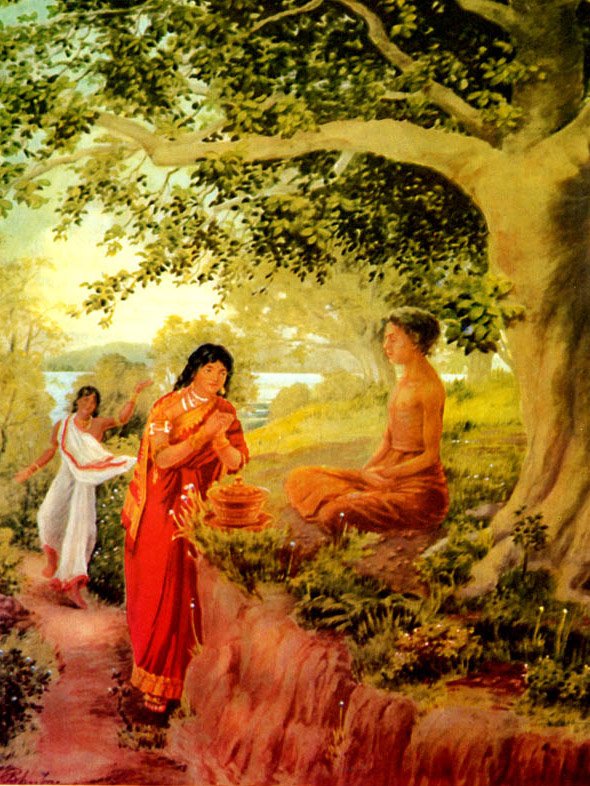Apadana commentary (Atthakatha)
by U Lu Pe Win | 216,848 words
This is the English translation of the commentary on the Apadana (Atthakatha), also known as the Visuddhajana-Vilasini. The Buddhist stories known as apadanas refer to biographies of Buddhas, Buddhist monks and nuns. They are found in the Pali Canon (Khuddaka Nikaya), which is the primary canon of Theravada Buddhism. Alternative titles: Visuddhaja...
Commentary on Biography of the thera Dhammacakkika
Stanzas starting with Siddhatthassa Bhagavato constitute the biography of the venerable thera Dhammacakkika. This one also having done devoted service toward former Buddhas, accumulating meritorious deeds conducive towards escape from the rounds of repeated rebirths, in this and that existence was reborn in a family house at the time of the Glorious One Siddhattha; having attained the age of development, his household increased in number with his wife and children and he became a man of abundant wealth having been endowed with prosperity. Being piously pleased with the three gems, he became full of pious faith, had a wheel of dhamma made at the back of the seat of preaching dhamma in the preaching hall (dhammasabhā) and reverentially made his offering. On account of that act of merit, in places where he was born, among divine and human-beings, he enjoyed the prosperity of sakka and world-king, in due course, sprang up in a family-house, when this Buddha arose. endowed with wealth, he properly provoked pious faith in himself, became a monk, developed clear insight (vipassanā), attained arahatship before long even, became naturally well-known as the thera Dhammacakkika, by the one resembling the name of the good deed done by him formerly.
102. Having attained the fruition of arahatship commensurate with the load of merit, he remembered his own former deed, became pleasant-minded, uttered a stanza starting with Siddhatthassa Bhagavato, in order to make manifest his deed done formerly. Sīhāana sammukhā (well-facing the lion-seat), in front of the seated lion Glorious One, at the very facing place of Buddha's seat; thus, is the meaning. Dhammacakkam me ṭhapitam (the wheel of truth had been placed by me) the wheel of truth (dhamma), was made, having had resemblance of a mirror made in the middle after showing lion-figure on both sides of it in the manner of a spiritual wheel (dhammacakka) by me and placed and offered it by me. What has become? vaṇṇitam (praised), spoken well of as "excessively excellent" by intelligent wise-men. The wheel of truth (dhammacakka) is well made; thus, is the connection.
103. Cāruvaṇṇo va sobhāmi (I shine like the very colour of gold) similar to gold colour, I glitter and shine; thus, is the meaning. also thus:- "Catuvaṇṇahi sobhām (I shine with four colours)"; Sobhāmi, I shine with the four colours, reckoned as such births as princely warrior, brahmin, merchant and commoner (sudda); thus, is the meaning. Sayoggabalavāhano (bearer of one's own strength of soldiers), equipped (Sahito (accompanied) with) such equipments as gold palanquins and so on, with the strength of such servants as commander-in-chief, great ministers and so on, as well as with the transport reckoned as elephants, horses, chariots; thus, is the meaning. Bahujjanā (many people), abundant human beings; anuyantā (going after), following me; niccam (always), they surround me at all times; thus, is the connection. The rest is but easy of comprehension.
The commentary on the biography of the thera Dhammacakkika has ended.
